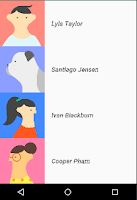What is JS, React and JSX ?
If you are react developer and you are getting confused with above terms and you want to know a bit about it so let's discussed about the role of each one. JS : JS stands for JavaScript . It is a interpreted scripting language and widely used in web. It is used within the HTML tags. It is high level language. React : React is a JavaScript library developed and maintain by Facebook . React widely used to make the user interface for single page application. JSX : JSX is a pre-processor step and adds XML syntax to JavaScript. JSX provides the ability to use the tags within the react component which is easy to use. Like XML, it tags have a tag name, attributes, and children. You can also use react without it but it makes code easy to understand and good looking.
